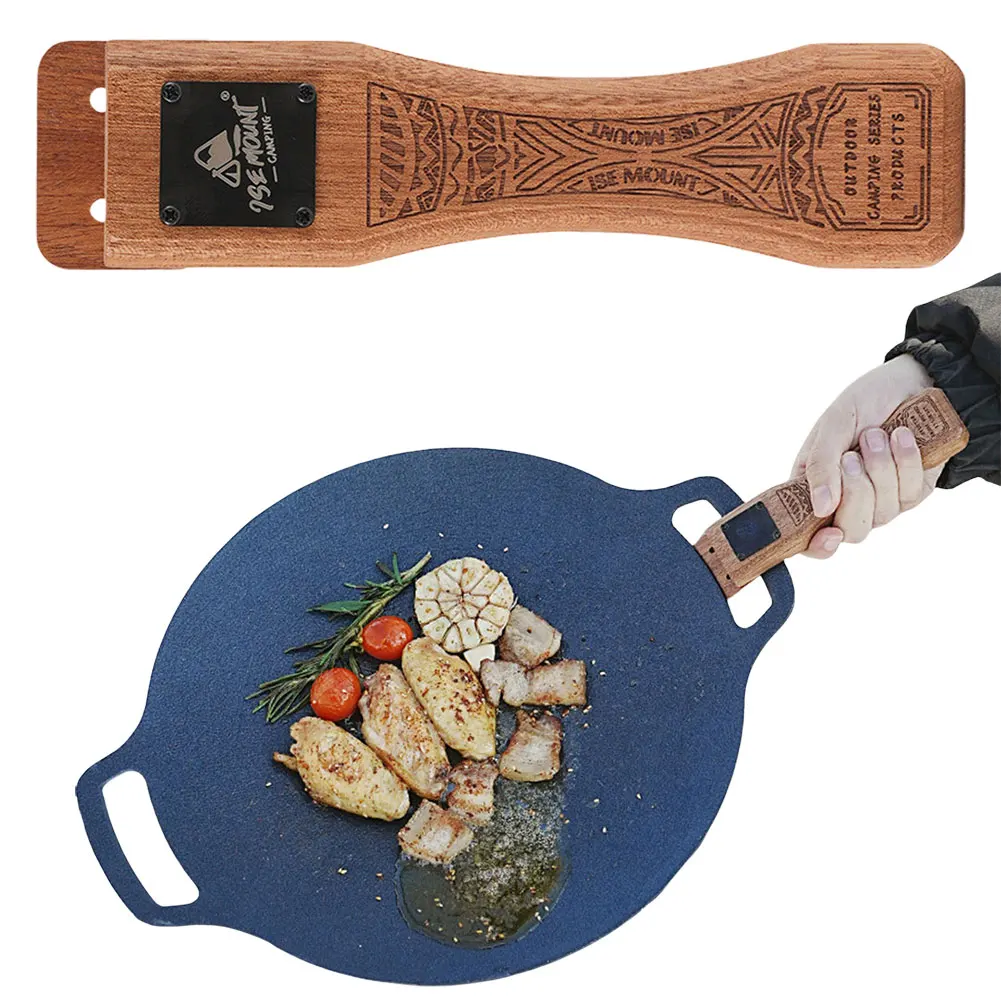Find Your Perfect Oasis: 10 Lightweight Backpacking Tents for Solo Travelers
Solo backpacking—there’s nothing quite like it, is there? Just you, your pack, and the open trail. But let’s be real: choosing the right tent can make or break the experience. It’s your portable sanctuary, your bug-free zone, and your shield against the unpredictable whims of Mother Nature. So, how do you pick the perfect one? Well, you’re in the right place. We’re going to walk through ten fantastic lightweight backpacking tents designed specifically for solo adventurers like yourself.
Why a Lightweight Tent Matters for Solo Backpacking
Okay, let’s get down to brass tacks. Every ounce counts when you’re trekking alone. Think about it: you’re carrying everything—food, water, gear, the whole shebang. Lugging a heavy tent uphill for miles? No thanks. Lightweight tents offer a sweet escape from the extra burden, allowing you to hike further, faster, and with a lot more enjoyment. Plus, easier setup and pack-down make those precious minutes at camp all the more relaxing.
Key Considerations When Choosing a Solo Backpacking Tent
Not all tents are created equal. Before we jump into our top picks, let’s cover some crucial factors to keep in mind.
Weight
This is the big one. Aim for a tent that weighs under three pounds, ideally closer to two. Remember, manufacturers often list “packed weight” and “minimum weight”—pay attention to both, but lean towards the minimum weight, which is usually just the tent body, poles, and rainfly.
Packed Size
How much space will it take up in your pack? Smaller is better. Look for tents that compress nicely and don’t hog valuable real estate. A compact tent makes packing a breeze and leaves room for other essentials (like that extra chocolate bar).
Ease of Setup
After a long day on the trail, the last thing you want is to wrestle with a complicated tent. Look for simple designs with intuitive pole configurations. Trust me, your future self will thank you.
Weather Resistance
Can your tent handle wind, rain, and the occasional unexpected snow flurry? Check the tent’s waterproof rating (measured in millimeters) and consider its overall design. A full rainfly and sturdy construction are must-haves.
Livability
Just because it’s a solo tent doesn’t mean you want to feel like you’re in a coffin. Consider the interior space, peak height, and ventilation. A little extra room to move around can make a big difference over multiple nights.
Alright, with those factors in mind, let’s get into the good stuff!
Top 10 Lightweight Backpacking Tents for Solo Adventures
I’ve compiled a list of tents that hit all the right notes: They’re light, compact, durable, and (dare I say) even a bit luxurious for the backcountry. These aren’t listed in any particular order because, frankly, the “best” tent really depends on your specific needs and preferences. But I’m confident one of these will be perfect for you.
1. Big Agnes Copper Spur HV UL1
The Copper Spur is a classic for a reason. It’s incredibly livable for a one-person tent, with a high peak height and steep walls that maximize interior space. It’s also impressively light and packs down small. The materials are high-quality, ensuring it can stand up to the rigors of backpacking. Durability is key, and Big Agnes usually delivers something that lasts.
2. Nemo Hornet Elite OSMO 1P
For the weight-conscious adventurer, the Nemo Hornet Elite is an absolute dream. It’s one of the lightest tents on the market, tipping the scales at just over a pound. Its minimalist design requires some trade-offs in terms of durability, but if you’re careful, it’s a fantastic choice for shaving ounces. Seriously, you have to be delicate putting it up.
3. MSR Hubba Hubba NX Solo
Don’t let the name fool you, this is technically a one-person tent now, whereas it used to be a 2 person tent. The MSR Hubba Hubba NX offers a great balance of weight, space, and durability. It’s a freestanding tent, which makes setup a breeze, and the large door and vestibule provide ample storage space. MSR’s quality is tough to beat, making it a reliable option for all kinds of conditions.
4. Zpacks Duplex Flex Solo
If you’re ready to embrace the ultralight world, the Zpacks Duplex Flex Solo is a top contender. It’s made from Dyneema Composite Fabric (DCF), an incredibly strong and waterproof material that weighs next to nothing. It does require trekking poles for setup, but the weight savings are significant.
5. Tarptent Notch Li
Tarptent is known for its innovative designs and high-quality craftsmanship. The Notch Li is a hybrid single/double-wall tent that offers excellent ventilation and weather protection. It’s also surprisingly spacious for a one-person tent and uses trekking poles for setup, saving on weight. I’ve seen people in the Pacific Northwest absolutely swear by these.
6. Sea to Summit Telos TR1
Sea to Summit brings its innovative design to the tent world with the Telos TR1. This tent features a unique tension bar system that maximizes interior space and creates near-vertical walls. It’s also made from high-quality materials and includes clever features like a “Hangout Mode” for enjoying the views from inside your tent. Think of this like the luxury car of tents.
7. REI Co-op Quarter Dome SL 1
REI’s Quart Dome is your value pick without sacrificing quality. It’s light, offers decent space, and is made of affordable materials, making it a great choice for budget-conscious backpackers who still want something that will perform. It is also easy to find at an REI near you.
8. Durston X-Mid 1P
The Durston X-Mid 1P has developed a cult following among backpackers for its exceptional value and performance. Designed by experienced backpacker Dan Durston, this tent is lightweight, easy to set up using trekking poles, and provides excellent weather protection. It offers a surprising amount of interior space for a solo tent, making it comfortable for extended trips. You know what? This tent is a hidden gem!
9. Six Moon Designs Lunar Solo
Another favorite among ultralight enthusiasts, the Six Moon Designs Lunar Solo is a single-wall tent that offers a lot of space at a minimal weight. It requires trekking poles for setup and features a unique cone-shaped design that provides excellent wind resistance. It’s a great option for those who want a roomy shelter without carrying extra weight.
10. Alps Mountaineering Lynx 1
If your budget is a primary concern, the Alps Mountaineering Lynx 1 is a solid choice. While it’s not the lightest option on this list, it’s still relatively lightweight and offers good weather protection at an affordable price. It’s a great starter tent for those just getting into backpacking.
Choosing the Right Tent: Questions to Ask Yourself
Alright, we’ve covered a lot of ground, but how do you narrow it down? Here are some questions to ponder as you make your decision.
What Type of Backpacking Will You Be Doing?
Are you a weekend warrior or a thru-hiker? Will you be camping in exposed alpine environments or sheltered forests? Your answers will influence the importance of factors like weight, durability, and weather resistance.
What’s Your Budget?
Tents can range from a couple of hundred dollars to well over $500. Set a realistic budget and stick to it. Remember, you don’t need the most expensive tent to have a great backpacking experience. Sometimes the lighter tent is worth the price, and sometimes it isn’t.
Do You Prefer Freestanding or Non-Freestanding Tents?
Freestanding tents are easier to set up, especially on hard or rocky surfaces. Non-freestanding tents are typically lighter but require staking out, which can be challenging in certain conditions.
How Much Space Do You Really Need?
Be honest with yourself. Do you need room to sit up and move around, or are you okay with a more minimalist shelter? More space equals more weight, so find the right balance for your needs.
Do You Need a Vestibule for Gear Storage?
A vestibule provides a covered area for storing your pack, boots, and other gear. It’s a nice feature to have, especially in rainy conditions.
What Kind of Weather Conditions Will You Encounter?
If you’ll be camping in areas with frequent rain or strong winds, prioritize a tent with excellent weather resistance. If you’ll be in hot, humid climates, look for a tent with good ventilation.
Tips for Extending the Life of Your Backpacking Tent
You’ve invested in a great tent, so it’s worth taking care of it. Here are a few tips to keep your shelter in top shape.
Use a Footprint or Groundsheet
This adds an extra layer of protection between your tent floor and the ground, preventing punctures and abrasion. A Tyvek sheet can work nicely.
Clean Your Tent Regularly
Wipe down the inside and outside of your tent with a damp cloth to remove dirt and debris. Avoid using harsh detergents or bleach.
Dry Your Tent Thoroughly Before Storing It
Moisture can lead to mildew and damage the tent fabric. Make sure your tent is completely dry before packing it away. It will also ruin the smell of your tent, so don’t slack on this one.
Store Your Tent in a Cool, Dry Place
Avoid storing your tent in direct sunlight or in a damp basement. A cool, dry closet is ideal.
Repair Tears and Holes Promptly
Use a tent repair kit to fix any tears or holes as soon as you notice them. Small tears can quickly become big problems if left unattended. Gear Aid Tenacious Tape is the tent owner’s best friend.
Final Thoughts: Your Home Away From Home
Choosing the right backpacking tent isn’t just about finding a shelter; it’s about creating a comfortable and safe space to recharge after a long day on the trail. It’s your temporary home, your refuge from the elements, and a key ingredient in making your camping experience unforgettable. With a little research and careful consideration, you can find the perfect tent to accompany you on all your solo adventures. Happy trails!
Frequently Asked Questions
<div class="faq-question"><b>Are freestanding tents better than non-freestanding tents for solo backpacking?</b></div>
<div class="faq-answer">Freestanding tents are easier to set up on various terrains, while non-freestanding tents are lighter but require staking, which may be challenging in certain environments.</div>
<div class="faq-question"><b>How important is weather resistance when choosing a backpacking tent?</b></div>
<div class="faq-answer">Weather resistance is crucial, especially if you anticipate camping in areas with rain, wind, or snow. Look for tents with high waterproof ratings and robust construction.</div>
<div class="faq-question"><b>What are the best materials for a lightweight backpacking tent?</b></div>
<div class="faq-answer">Common materials include nylon and polyester fabrics with waterproof coatings. Ultralight tents may use Dyneema Composite Fabric (DCF) for its exceptional strength-to-weight ratio.</div>
<div class="faq-question"><b>How can I extend the lifespan of my backpacking tent?</b></div>
<div class="faq-answer">Use a footprint to protect the floor, clean and dry the tent after each use, store it properly, and repair any tears promptly.</div>
<div class="faq-question"><b>Is a vestibule necessary for a solo backpacking tent?</b></div>
<div class="faq-answer">A vestibule provides a covered area for storing gear, which can be very useful in rainy conditions. While not essential, it enhances comfort and convenience.</div>
<div class="faq-question"><b>Can I use a 2-person tent for solo backpacking?</b></div>
<div class="faq-answer">Yes, but a 2-person tent will be heavier and bulkier. If you prioritize space and don't mind the extra weight, it can be a comfortable option.</div>
DISCLAIMER
Please note that backpacking in the wilderness can be inherently risky. Always ensure you have proper training, navigation skills, and emergency preparedness. Weather conditions can change rapidly in remote areas, so be prepared for unexpected situations. Check with local authorities regarding trail closures, permits, and wildlife advisories. Never rely solely on electronic devices for navigation. Carry a map, compass, and backup batteries. By engaging in backpacking activities, you acknowledge and accept these risks. Always practice “Leave No Trace” principles.
Categories
- Navigation & Safety (35)
- Shelter & Sleep (37)
Recent Comments
Archives
Top rated products
-
 Self-inflating Mat Trip Air Bed Mattress Tent Sleeping Pad Sponge Cushion Single/Double Ultralight 3cm/6cm Thickness
Rated 5.00 out of 5$211.00 – $370.67Price range: $211.00 through $370.67
Self-inflating Mat Trip Air Bed Mattress Tent Sleeping Pad Sponge Cushion Single/Double Ultralight 3cm/6cm Thickness
Rated 5.00 out of 5$211.00 – $370.67Price range: $211.00 through $370.67 -
 Deepower Electric Bike K100 400W Folding Ebike 48V30AH Removable Battery Disc Brake City Commuter Electric Bicycle for Adults
Rated 5.00 out of 5$1,463.83 – $2,014.08Price range: $1,463.83 through $2,014.08
Deepower Electric Bike K100 400W Folding Ebike 48V30AH Removable Battery Disc Brake City Commuter Electric Bicycle for Adults
Rated 5.00 out of 5$1,463.83 – $2,014.08Price range: $1,463.83 through $2,014.08 -
 New Pyramid Tent‘s Inner Tent Outdoor Rodless Ultralight Camping Backpacking Tent Pentagon Summer Mosquito Net Mesh Tent 2 Sizes
Rated 5.00 out of 5$86.32 – $105.96Price range: $86.32 through $105.96
New Pyramid Tent‘s Inner Tent Outdoor Rodless Ultralight Camping Backpacking Tent Pentagon Summer Mosquito Net Mesh Tent 2 Sizes
Rated 5.00 out of 5$86.32 – $105.96Price range: $86.32 through $105.96
Product Gallery
-
 SUP water ski, double-layer paddle board, inflatable high-density EVA surfboard, anti slip pad
$134.94 – $154.77Price range: $134.94 through $154.77
SUP water ski, double-layer paddle board, inflatable high-density EVA surfboard, anti slip pad
$134.94 – $154.77Price range: $134.94 through $154.77
-
 In Stock inflatable sup boards paddleboards standup paddle board waterplay surfing Isup Surf board with standard accessories
$445.84 – $453.22Price range: $445.84 through $453.22
In Stock inflatable sup boards paddleboards standup paddle board waterplay surfing Isup Surf board with standard accessories
$445.84 – $453.22Price range: $445.84 through $453.22
-
 Spatium 2-3 Persons Inflatable Kayak Canoe High Strength DropStitch Floor Inflatable Kayak For Fishing
Rated 5.00 out of 5$2,114.27
Spatium 2-3 Persons Inflatable Kayak Canoe High Strength DropStitch Floor Inflatable Kayak For Fishing
Rated 5.00 out of 5$2,114.27


 Camping Gear
Camping Gear Camping Chair
Camping Chair Camping Table
Camping Table Sleeping Bags
Sleeping Bags Camping Bed
Camping Bed Sleeping Gear
Sleeping Gear Camping Trolley
Camping Trolley Storage Bags
Storage Bags BBQ Portable
BBQ Portable Camping Tents
Camping Tents Gazebos
Gazebos Outdoor Cooler
Outdoor Cooler Cookware
Cookware Power
Power Camping Light
Camping Light Flashlight
Flashlight Portable Solar
Portable Solar Power Banks
Power Banks
 Fish Finders
Fish Finders Fishing Bags
Fishing Bags Fishing Jerseys
Fishing Jerseys Fishing Reels
Fishing Reels Fishing Chairs
Fishing Chairs Fishing Bait Boat
Fishing Bait Boat Fishing Floats
Fishing Floats Hard Baits
Hard Baits
 Hiking Vests
Hiking Vests Outdoor Bags
Outdoor Bags Water Filters
Water Filters Paracord
Paracord Walkie Talkie
Walkie Talkie
 Paddleboards
Paddleboards Boats
Boats Sea Scooter
Sea Scooter Accessories
Accessories
 Electric Bike
Electric Bike Electric Scooter
Electric Scooter

















